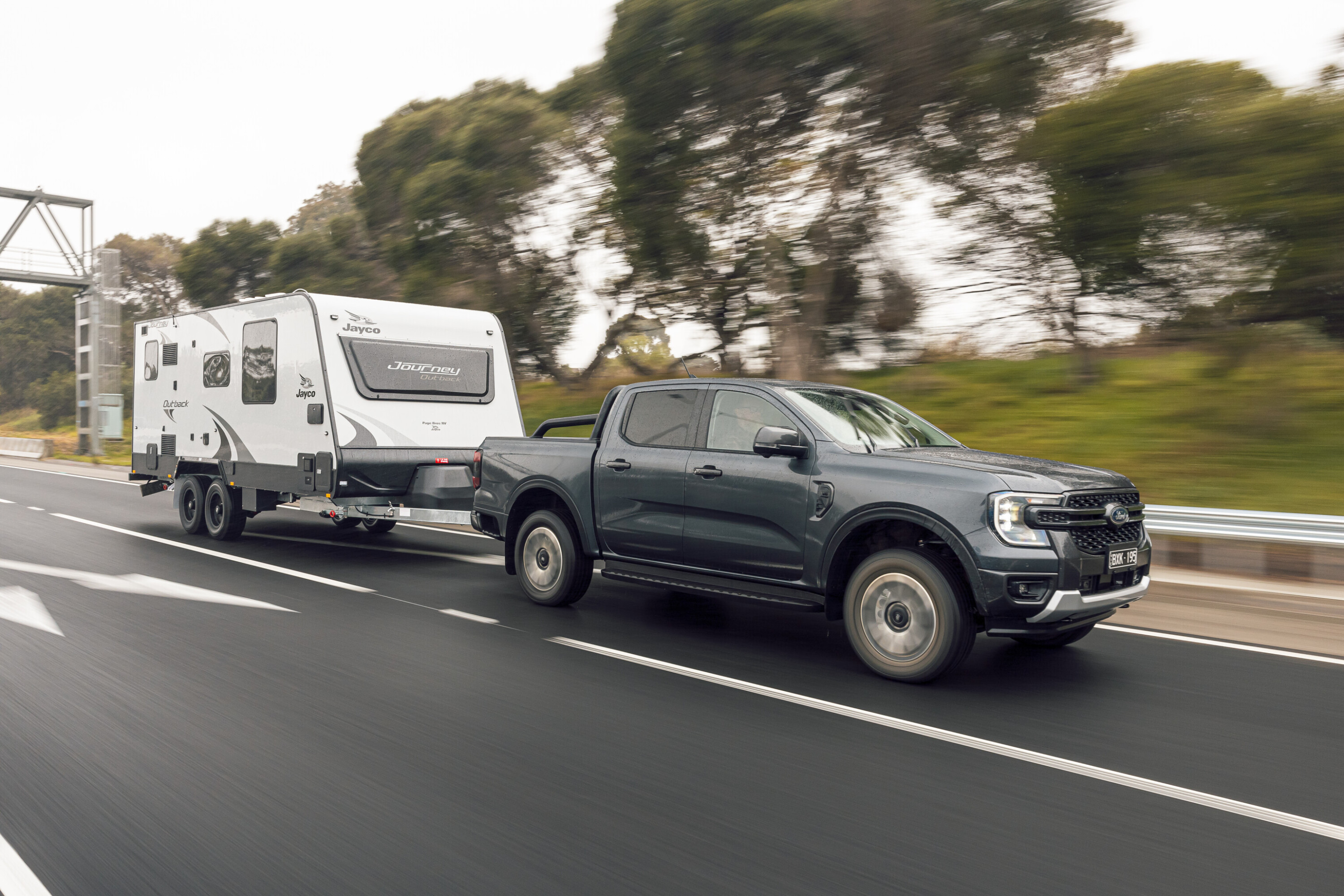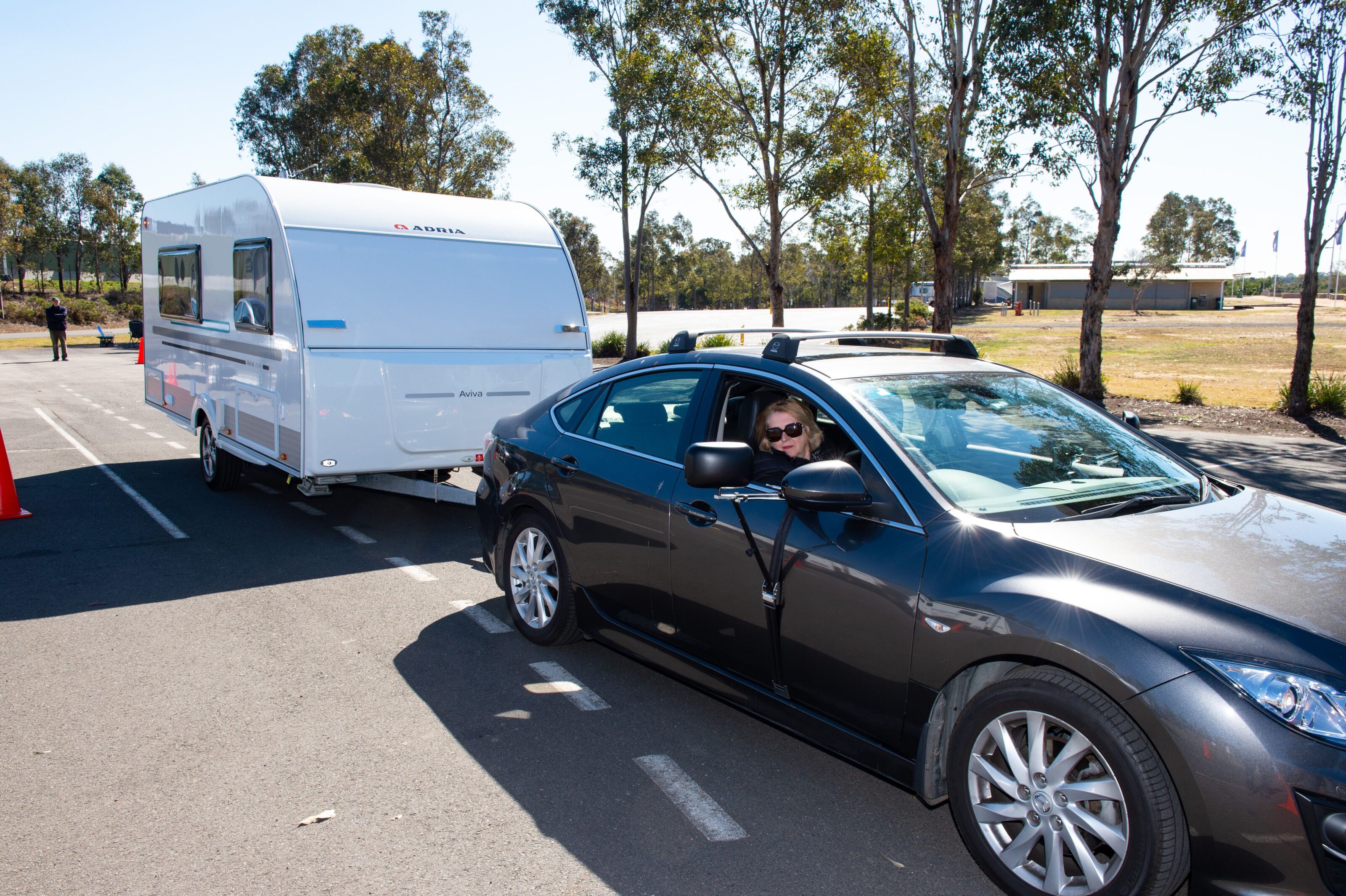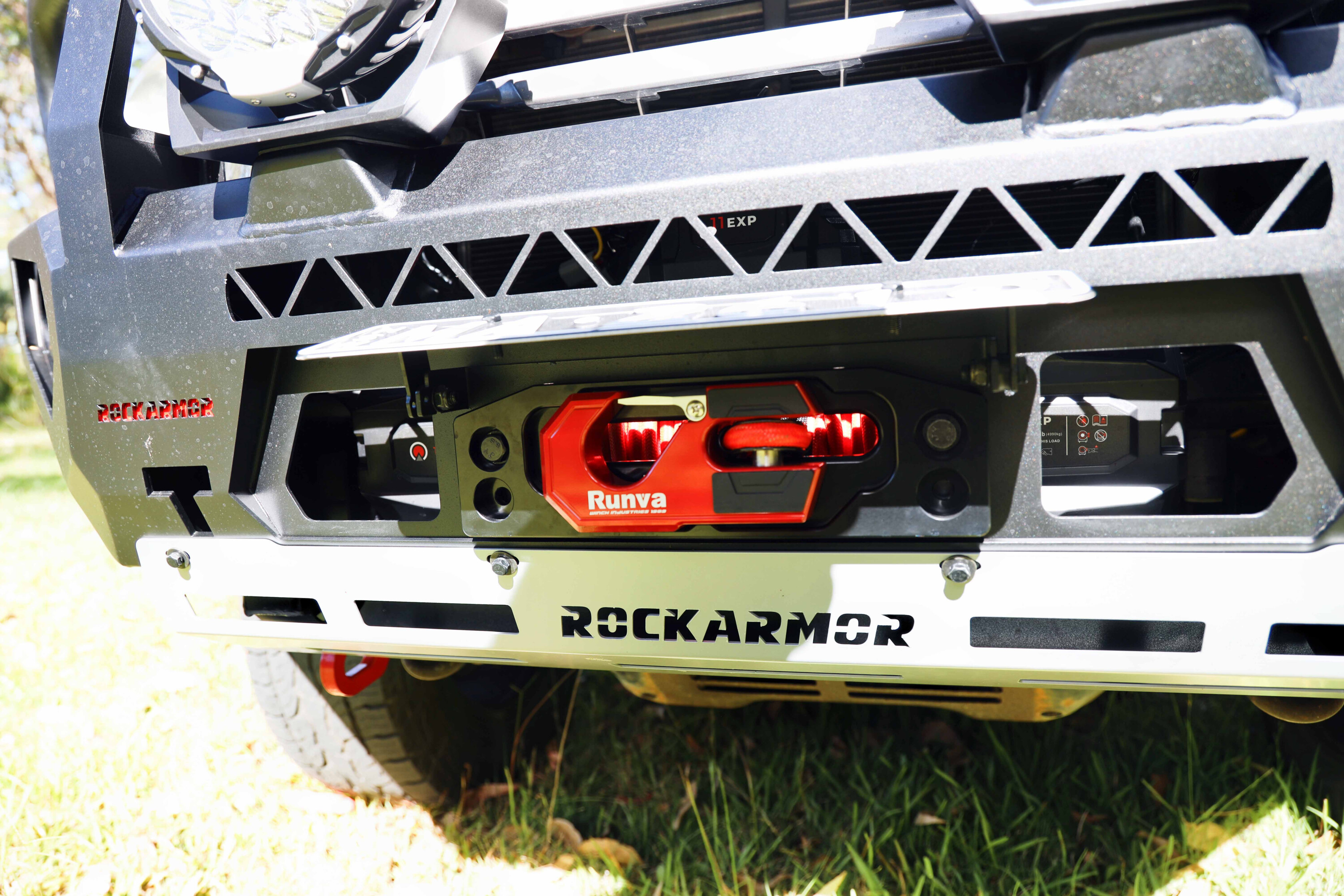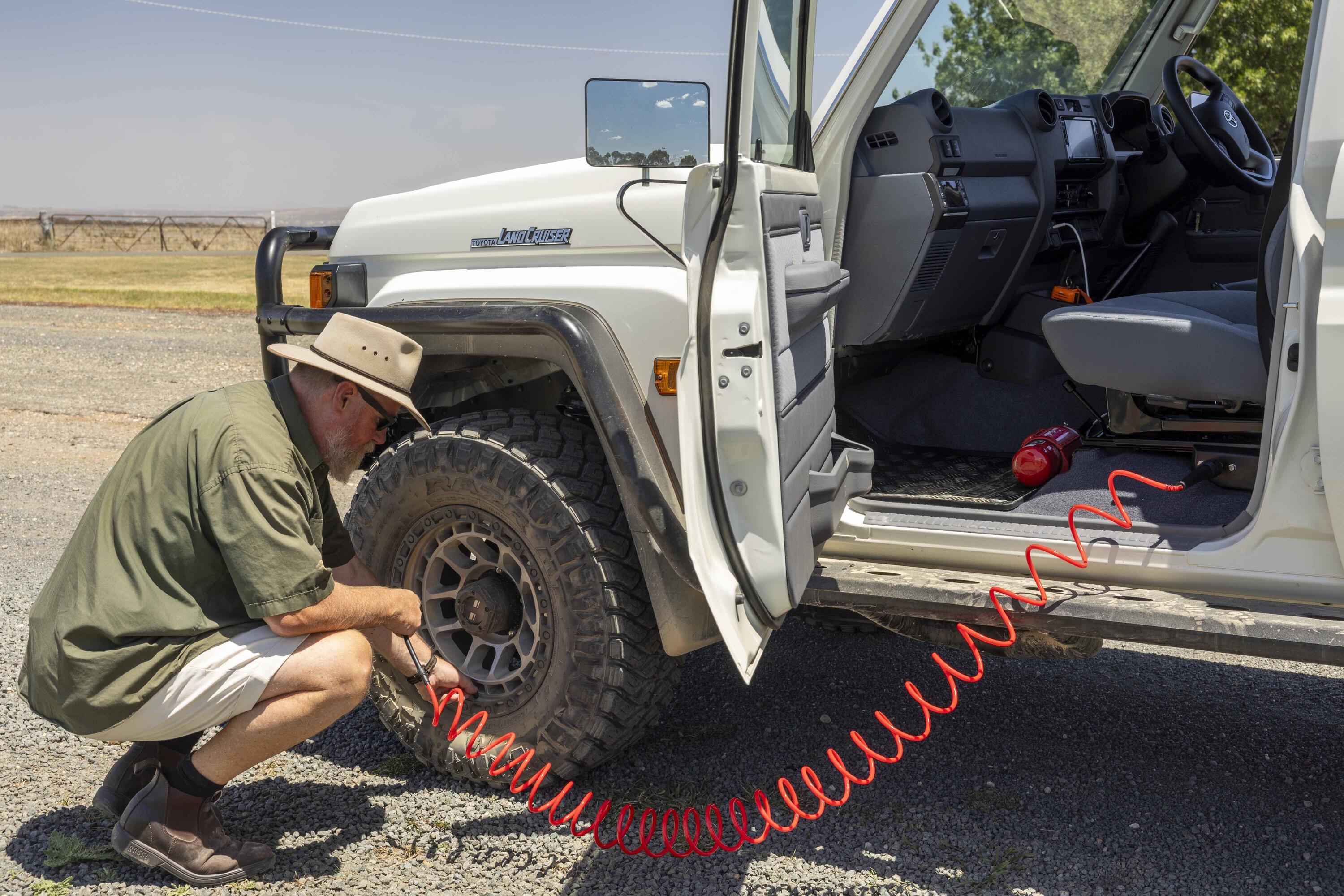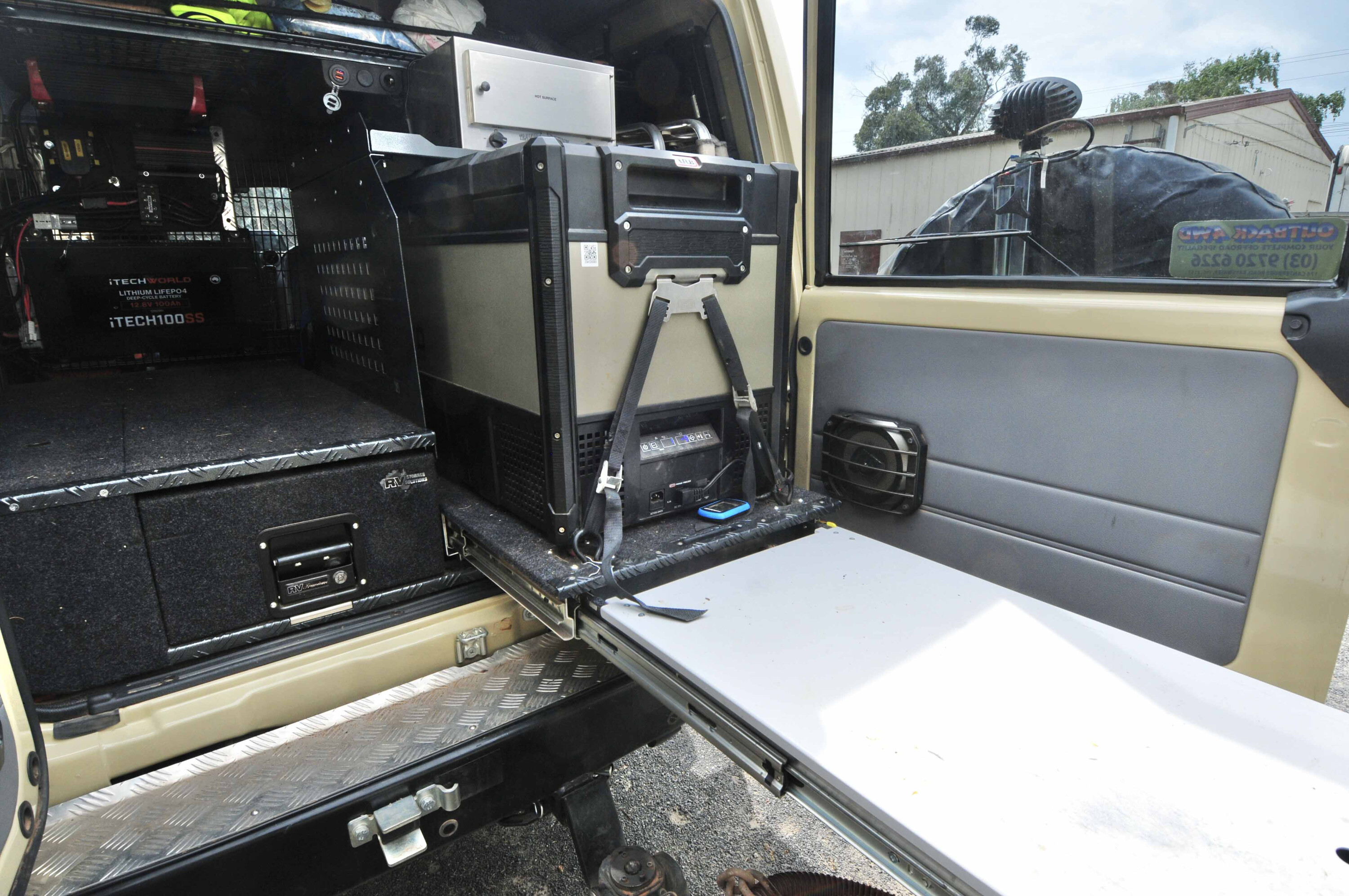Are you getting tired of online experts when it comes to what you need for a safe, comfortable, legal tow rig? Us too.
The sheer amount of bull-plop out there regarding GVM upgrades, GCM upgrades, air bags and weighbridges is, frankly, scary. And yet setting your vehicle up to tow a decent-sized van or camper remains one of the great mysteries to a lot of people out there. It’s also something that you can absolutely not afford to gamble with.
It seems like just as there’s a bum for every seat, there’s an armchair expert for every opinion. So let’s give the keyboard engineers a wide berth and actually talk to the folks who do this stuff for a living.
JUMP AHEAD
- What is GVM and GCM?
- Know your towing weights
- GVM and GCM upgrades
- Do you need a GVM or GCM upgrade?
- Air-bag suspension
- The basics of safe towing
- Weighing it all up
- Top 5 towing tips
What is GVM and GCM?
Let’s clear up any confusion over what GVM and GCM actually mean, why air bags are not necessarily the evil invention of chassis repairers, and why the weighbridge at the local council tip might land you in serious trouble.
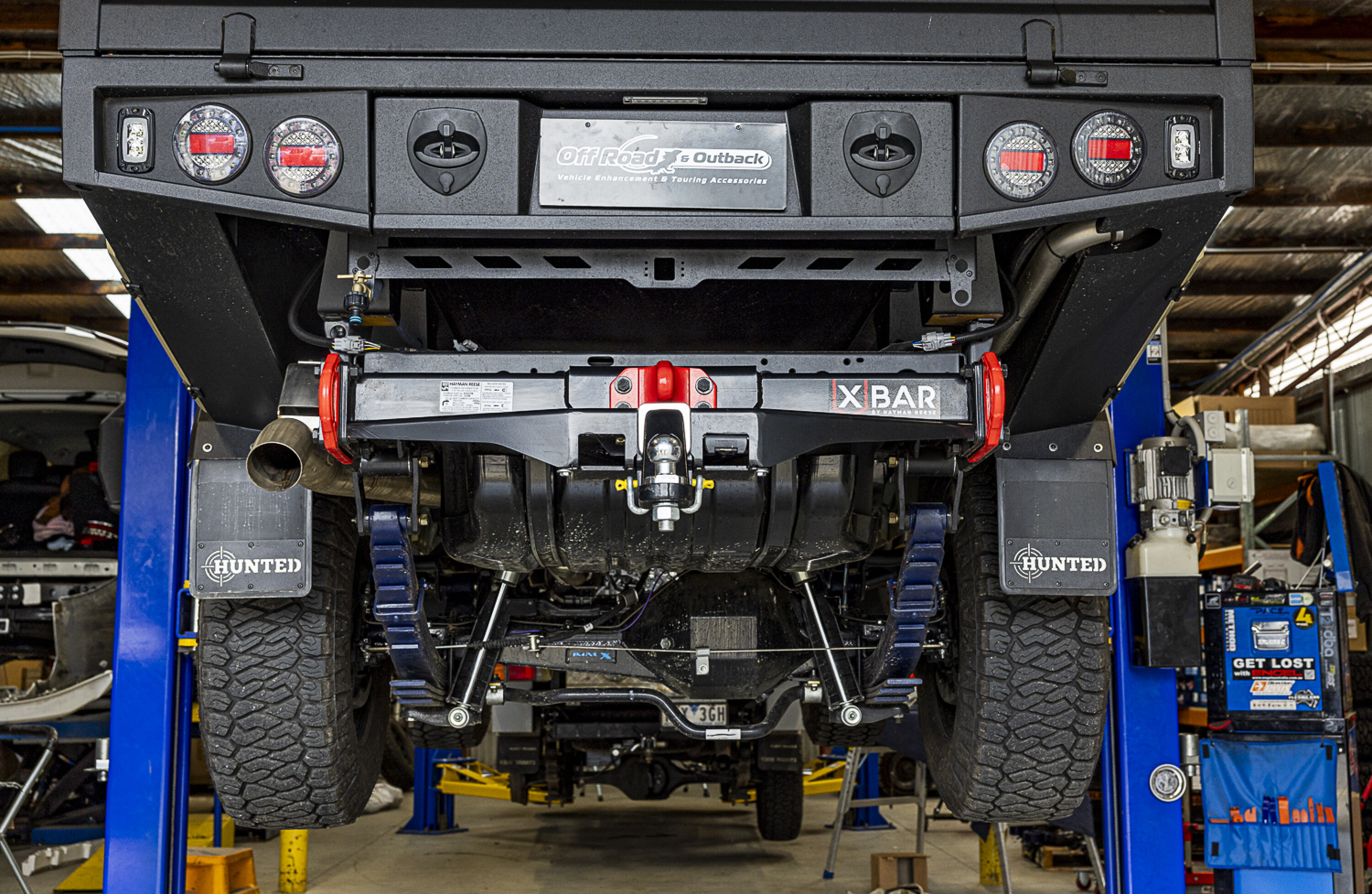
Or worse. Oh, and whether you really do need a GVM upgrade and when you might be best to leave your rig well alone.
So let’s start with some house-keeping. How about a quick definition of GVM and GCM that doesn’t come from your mate down the pub. Gross Vehicle Mass (GVM) is, to put it as simply as possible, the most your vehicle can weigh and be legally driven on the road.
The important thing is that this number includes everything in or on the vehicle, including fuel, luggage, accessories and even passengers. If you’re towing anything, the GVM must also include the tow-ball down-weight.
Gross Combination Mass (GCM) on the other hand is the legal total mass of the vehicle and anything it’s towing. Which also includes not just the boat or van, but what’s in its water tanks, gas bottles, and storage areas.

Exceed either of these numbers, and you’re looking down the barrel of a fine, being put off the road and even having your insurance company ignore your pleas should anything go wrong while you’re over the GVM or GCM.
In the real world, that could mean having your van towed back home by a third party (at your expense) or a big hole in your wallet when the insurance company won’t cover damage caused by your inadvertently overloaded rig.
Even worse, you could be jailed if your overloaded rig causes injury or death in the case of a shunt.
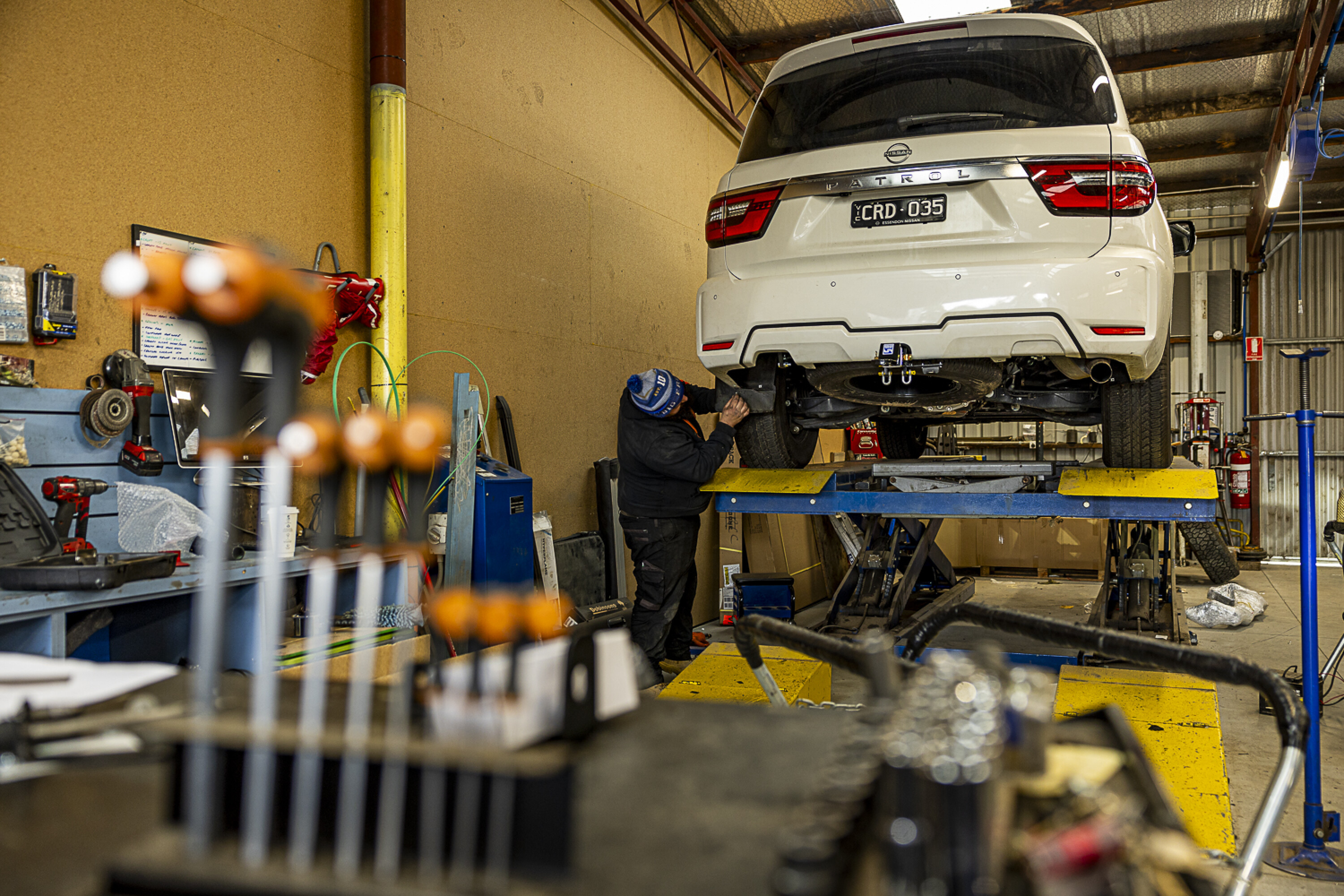
Know your towing weights
According to Off Road & Outback’s Bo Jackson, there’s a lot of confusion out there about the legalities as well as the best path to go down if you’re planning to tow big, heavy stuff. Bo understands that social media advice costs nothing, but reckons that in a lot of cases, that’s precisely what it’s worth. Or worse.
“There’s a lot of confusion out there,” she told us. “Some people – and it’s not necessarily their fault – have no idea, and social media isn’t helping at all. A lot of the advice you’ll see will be for a specific set-up that doesn’t even come close to suiting the next vehicle.”
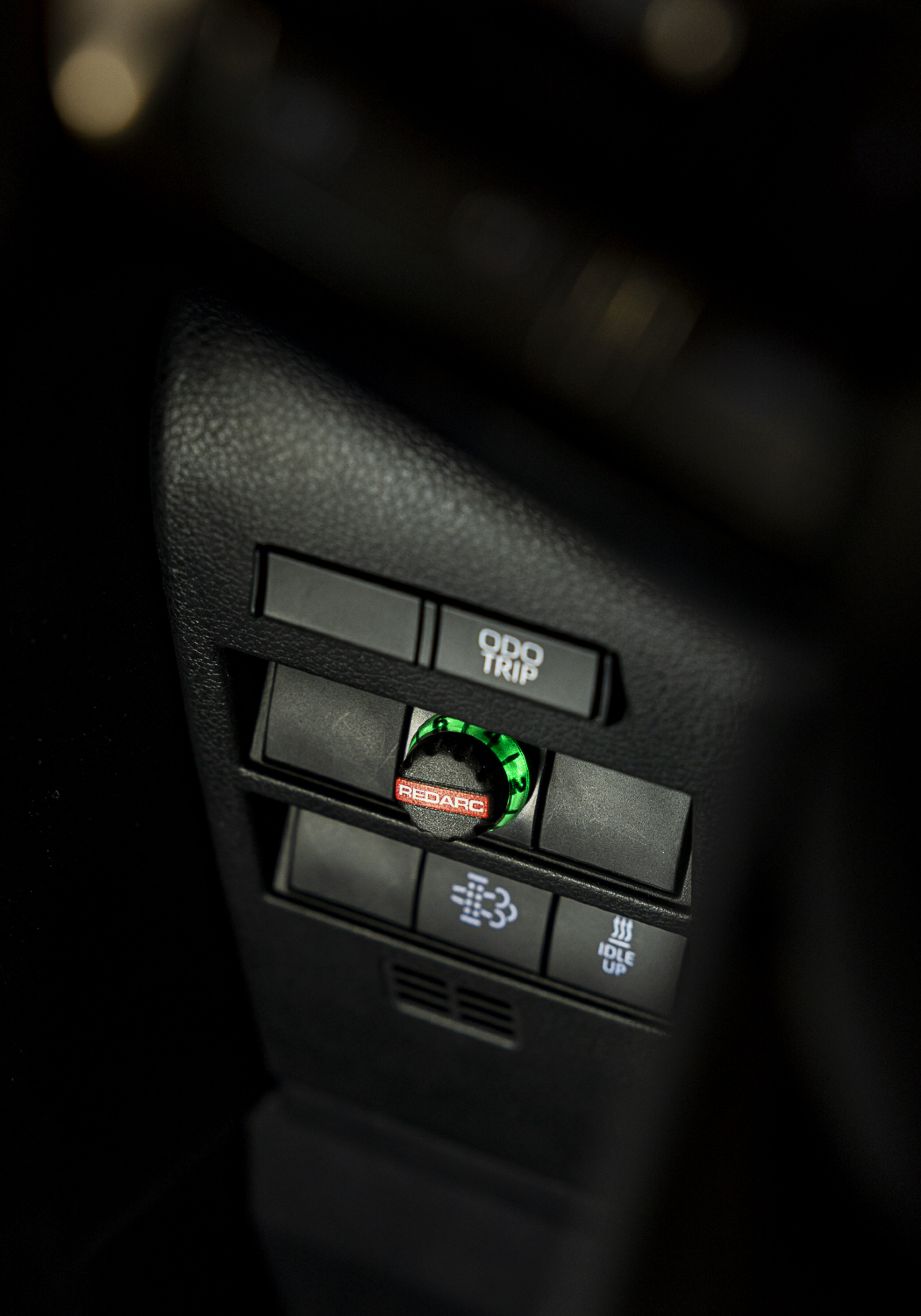
“Some of the things I see people write (in the name of advice) scares me.”
Bo reckons the path to the right towing set-up is very vehicle-dependent and there’s absolutely no one-size-fits-all solution.
“Working out what people need is the first step. So we always recommend that they get their vehicle and van professionally weighed. Guessing weights is not a good idea.”
Even then, Bo says that the weighbridge (the usual online advice) at the local tip ain’t gonna cut it.

“We always recommend a professional weighbridge because it gives you the weight of the vehicle, the van, the weight on every axle and the tow-bar. It’s also accurate to 500g.”
Such weigh-stations are set up with four platforms, each operating as a separate set of scales. The first one measures the weight on the tow-vehicle’s front axle, the second one the rear axle, the third platform takes the weight of the jockey-wheel (and, therefore, measures towball down-weight) and the fourth weighs the caravan or trailer itself, regardless of whether it’s a single or tandem axle unit.
“We’ve seen cars where the GVM is fine, but the way the vehicle sits and is loaded, the rear axle is way over (it’s weight limit). If they’d just chucked it on the weighbridge at the tip, they wouldn’t know that.
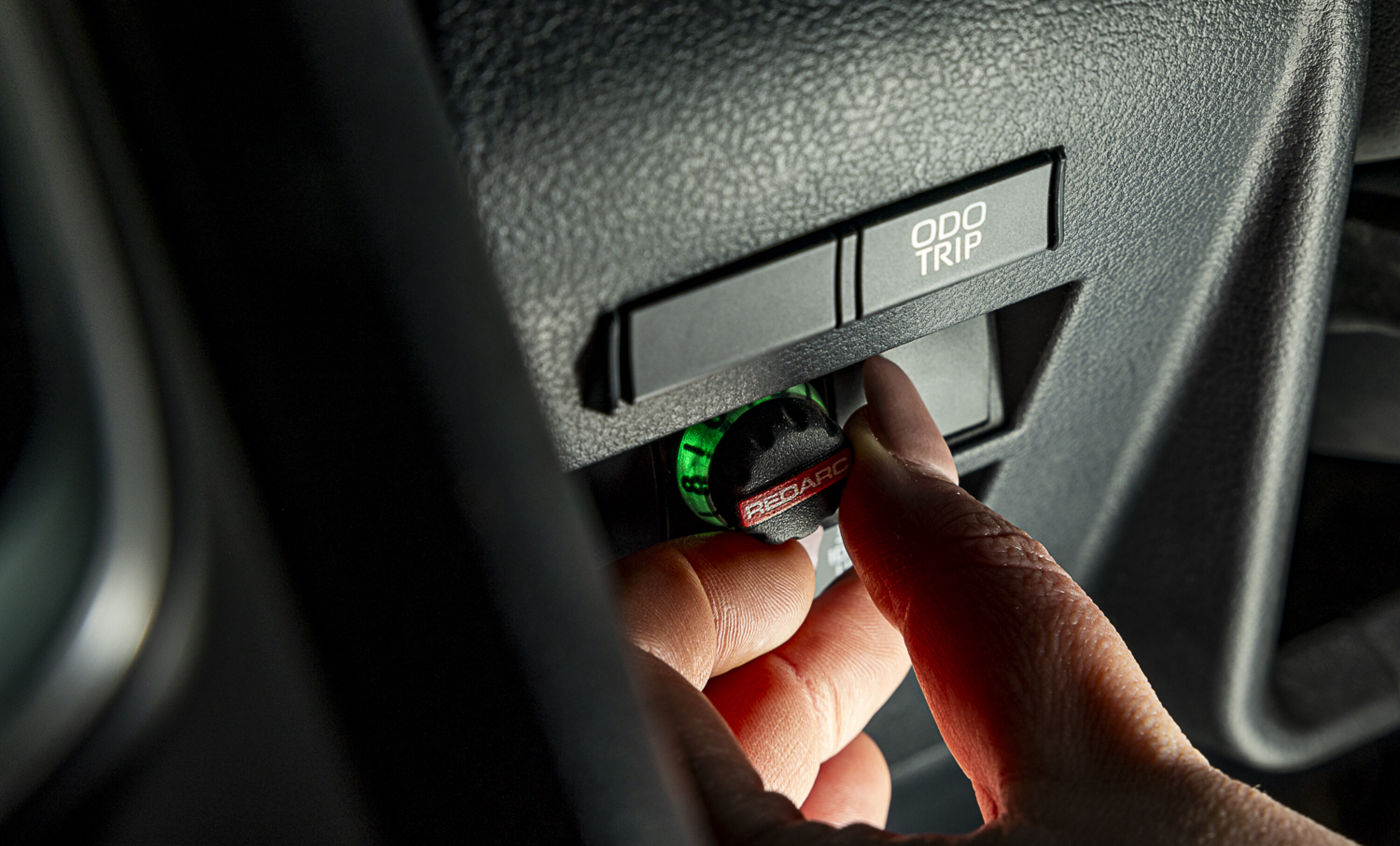
So, go to a professional weigh-station, get the written report and we can work it out from there.”
Linda Hitch, director at Hitch Engineering Services (and coincidentally a technical engineering advisor to the Australian caravan industry) agrees, adding that options for having a rig properly weighed include commercial weighbridges operating from some large service stations as well as special weigh-in days carried out by the various state caravan associations.
“But there are also mobile weighbridges that will come to you,” she points out. “They’ll usually cost between $300 and $400, but you’ll get a written report and they’ll be able to explain everything for you.”
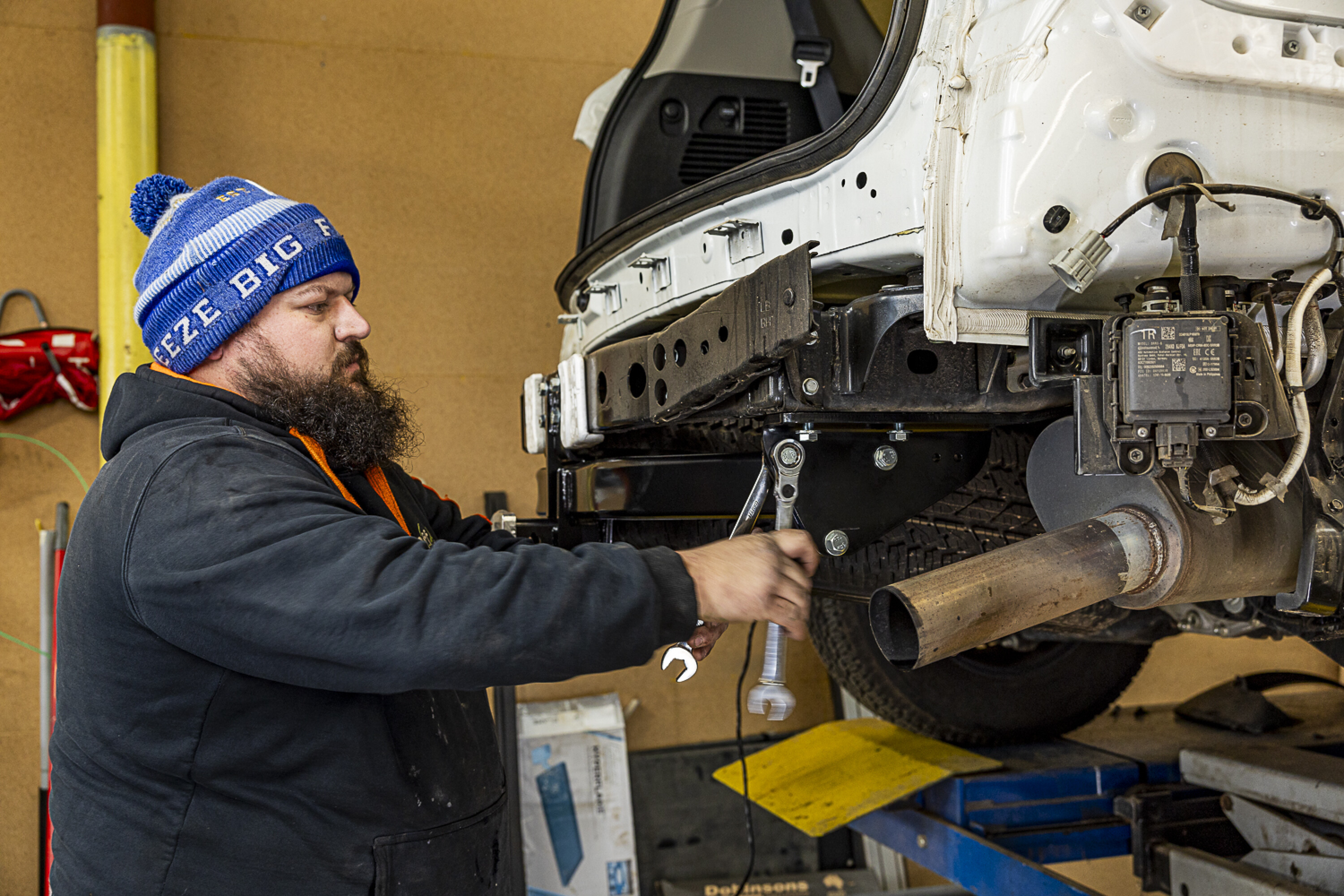
GVM and GCM upgrades
So what happens if you do need a GVM or GCM upgrade? Again, this can be a murky subject because different states and territories allow different modifications.
In some cases, the authorities will only allow a GVM upgrade on vehicles that have never been registered, and not on ones that already wear number plates. And the internet is full of statements that no state will allow a GCM upgrade under any circumstances.
But, depending on where you live, neither of those statements is 100 per cent correct.
Since Off Road & Outback is Victorian based, Bo Jackon’s expertise relates to that state. And she’s quick to point out that both GVM upgrades on both brand-new and secondhand vehicles are allowable, as are GCM upgrades. That catch is that you must use a Lovell’s GCM upgrade kit, because that’s the only one approved (in Victoria).
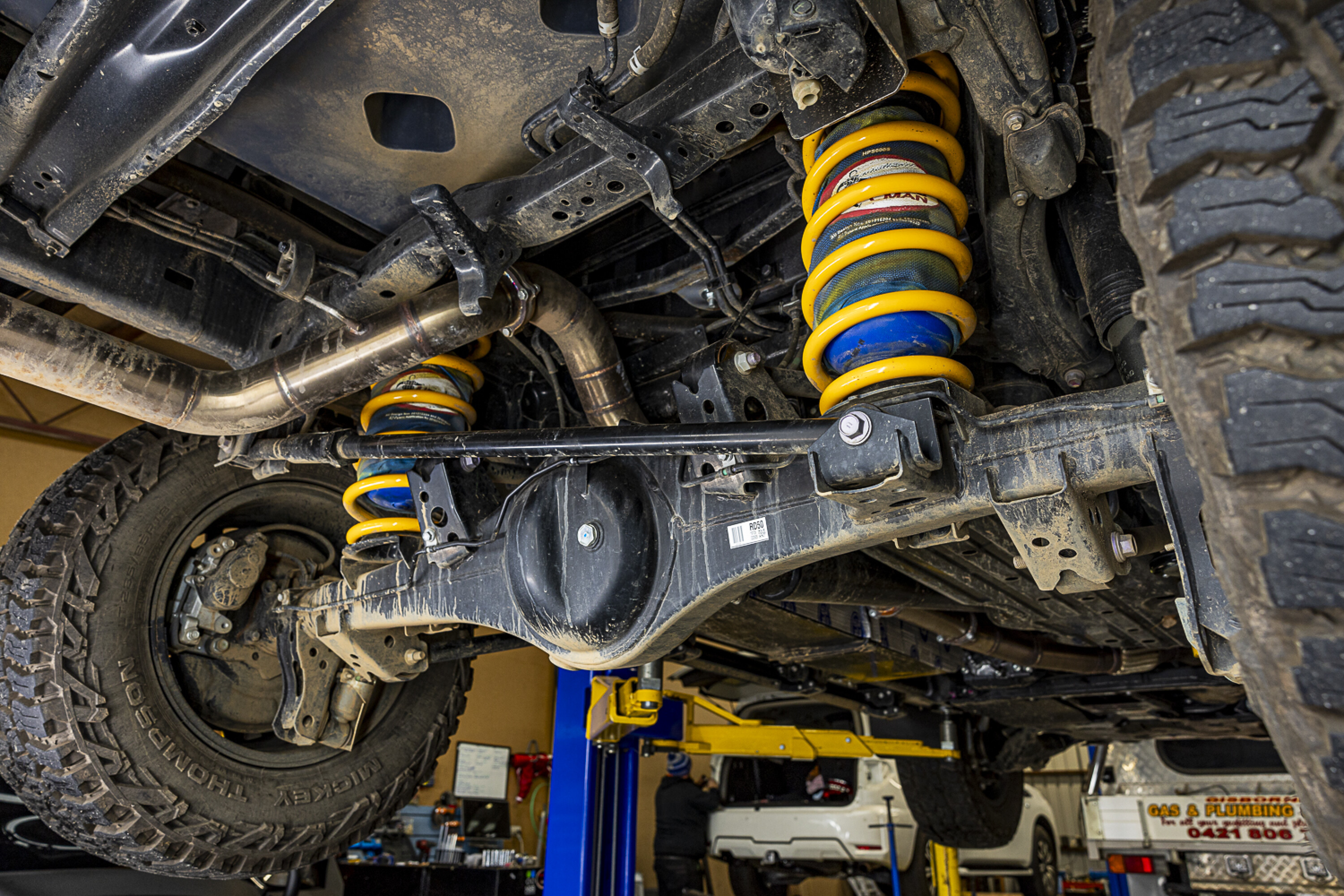
Clearly, you need to check the situation in your state but, again, that means talking to the authorities or a legitimate business involved in this type of work, not some galoot on a computer in his mum’s spare room.
So, exactly what’s involved in a GVM or GCM upgrade? Fundamentally, it’s hardware. That amounts to heavy duty front and rear springs and new dampers all rated for the heavier load being carried. In some cases, you might find you need to add a different indicator-light on the front quarter panel.
But Bo’s advice is to be wary of a shop trying to upsell you to a set of bigger brakes because typically, you won’t need them; the approved kits have all been signed off with stock brakes. Unless you want bigger brakes, of course.

Linda Hitch is not so trusting of factory braking capacity and reckons this is one area of a GVM upgrade that is often overlooked by some suppliers.
“When vehicles are designed, they’re tested for load capacity and towing, but I sometimes think brake capacities are overlooked. Manufacturer testing is done at full GVM to make sure the vehicle is able to stop within the regulations, but when you do a GVM upgrade, are you sure it’s been tested for braking performance with that new, higher weight? Some kits have, some haven’t, but people need to be aware of that.”
Ultimately, this will be the difference in using a trusted, reputable upgrade service, or calling the first number that comes up on your google search.
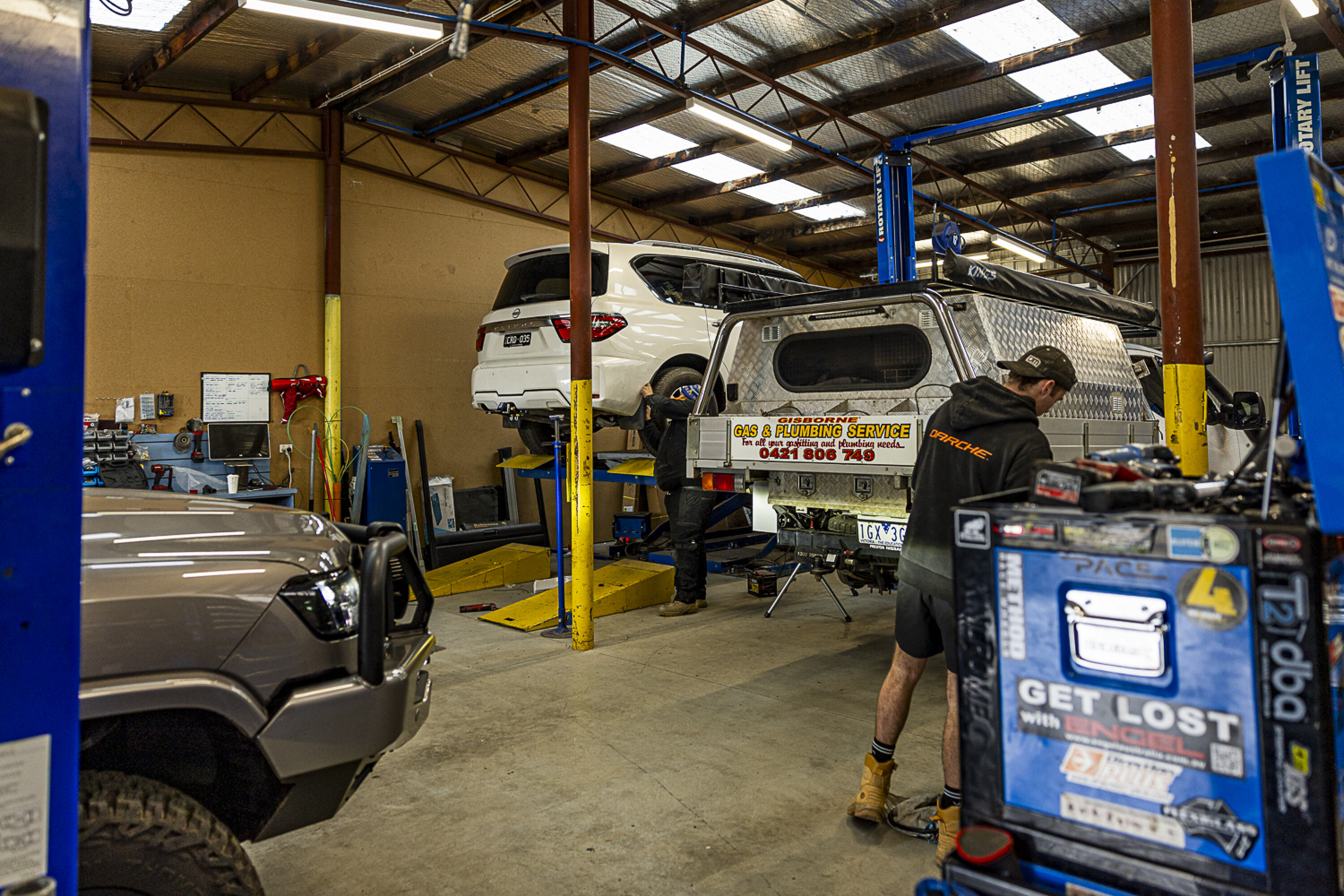
Do you need a GVM or GCM upgrade?
So do you need both a GVM and GCM upgrade? Typically, it’s not as simple as that as Bo points out that even with a GVM upgrade, if you start using the extra margin, you’ll still need a GCM upgrade before you can tow the full 3.5-tonnes most dual-cabs are now rated to haul.
That’s because the vehicle might be able to carry extra weight on board courtesy of the GVM upgrade, but since the GCM stays the same, the towing capacity will actually be less if the tow-car is making use of that extra GVM allowance.
“Even then,” says Bo, “just because the weights are within legal limits, a lopsided vehicle is still not safe.”
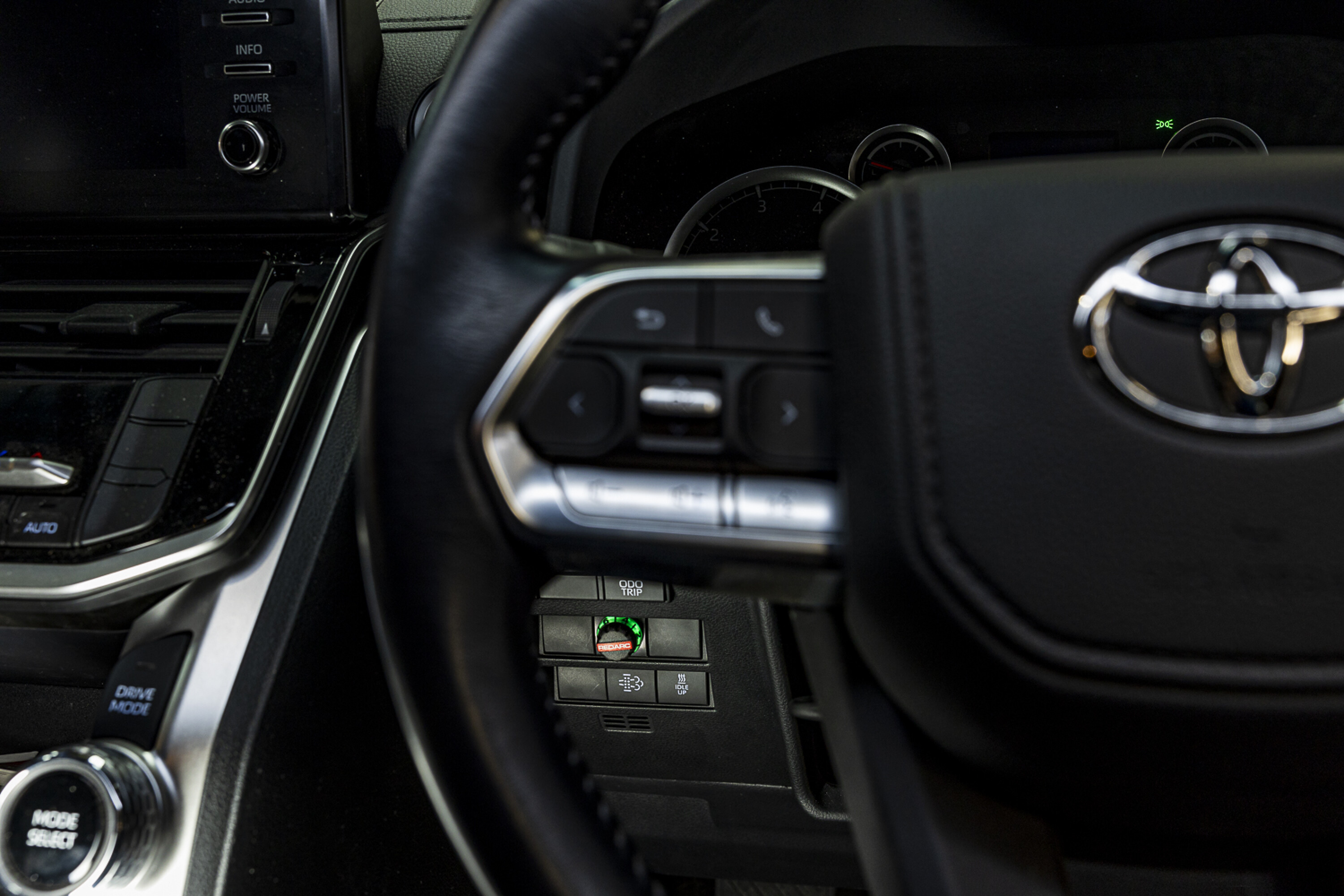
Linda Hitch agrees: “We find the seasoned travellers and towers know their GVM and GCMs. But it’s a bit of a mystery to others and many are pretty nonchalant about it all.”
“In a lot of cases, they haven’t distributed the weight correctly. Too much in the rear of the trailer or van creates an unstable towing scenario, where you get sway at speed. Or they load the front too much and then ball-weight is excessive and goes beyond the legal limits. That will also lighten the front and overload the rear axle. And this is all an issue because people don’t look at individual axle loads. They’re printed in the owner’s manual but people don’t look at them.”
The golden rules, then: “Keep weight low and around the axles. And don’t forget left-to-right balance.”
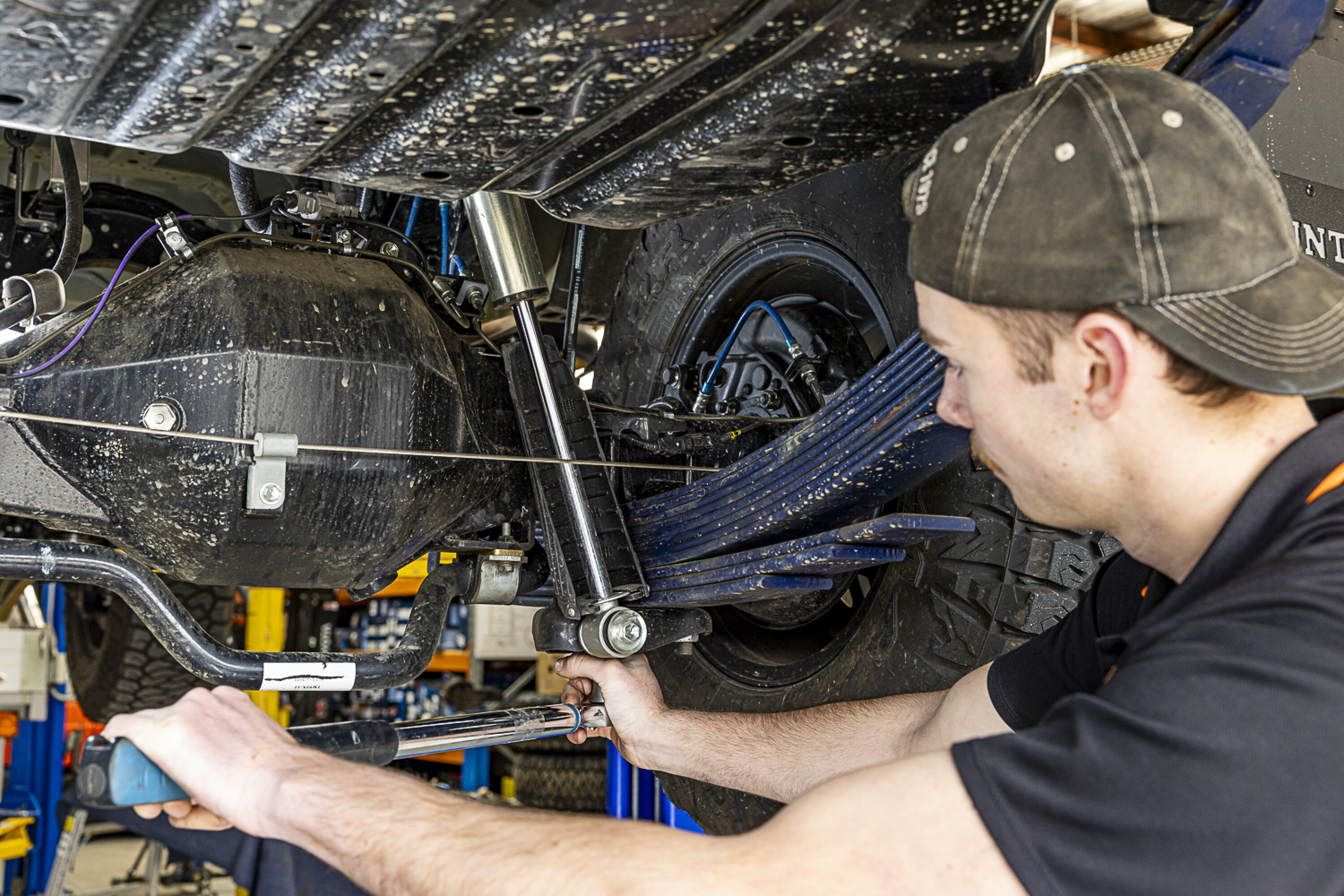
Bo says she sees problems in this area when people are trying to future-proof their rigs.
“You can’t go too big on a GVM upgrade with plans to add a heap of accessories in six months’ time. Because, in the meantime, the vehicle will be unsafe. A 4.5 tonne upgrade on a 2.8 tonne vehicle, for instance, is going to be seriously over-sprung, because it’s not carrying enough weight right now. Bigger is not always better. In some cases, we advise people that they don’t need a GVM [upgrade] at all.
That said, Linda Hitch believes that for every 20 customers she sees roll into her business, 19 of them would benefit from a GVM upgrade.
“A lot of that is because people are repurposing vehicles they already own. They can’t afford a new one, so the idea is to upgrade the one they have.”
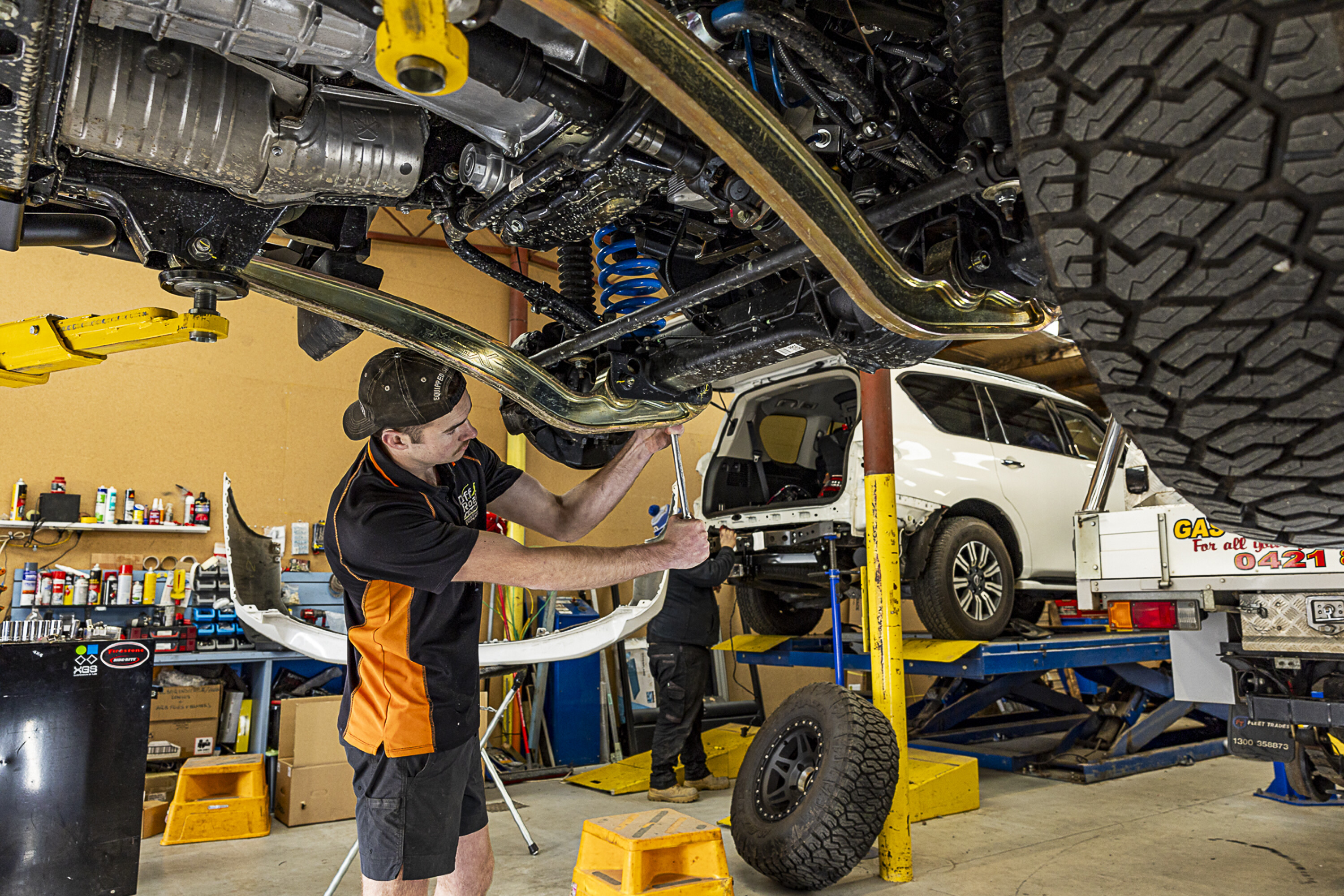
And let’s be honest, caravans are not getting any smaller, are they?
But Linda agrees that sometimes, a GVM upgrade and its expense could be avoided.
“If you don’t need it, don’t get it,” is her advice. “They’re expensive.”
“I always ask people if they really need to carry so much stuff in their caravan. Some do, others could do with leaving some stuff at home. If they did, they could avoid the 10 or 20-grand for an upgrade. It’s just not worth it sometimes. But when you see people who are going to be 200, 300 or 400kg over without it, then they definitely need it.”

Air-bag suspension
Okay, so what about air bags? Depending on who you talk to, these are the work of the devil, not to mention we’ve all seen those internet pictures of a line of dual-cabs with broken backs, allegedly from having air-bag springs fitted.
Bo says: “Air bags are very debatable. You’ll find one person telling you air bags are dangerous and rubbish, and the next telling you they’re fantastic. The reality is that air bags run into trouble when people think they’re a complete fix. They think they can just crank up the air bags and it’s all good.”
“The reality is bags are purely for ride levelling if you have a removable load. They’re not to carry constant weight. The chassis cracking you hear about is about overloading; the bags are not designed to take that one-tonne payload on their own.”
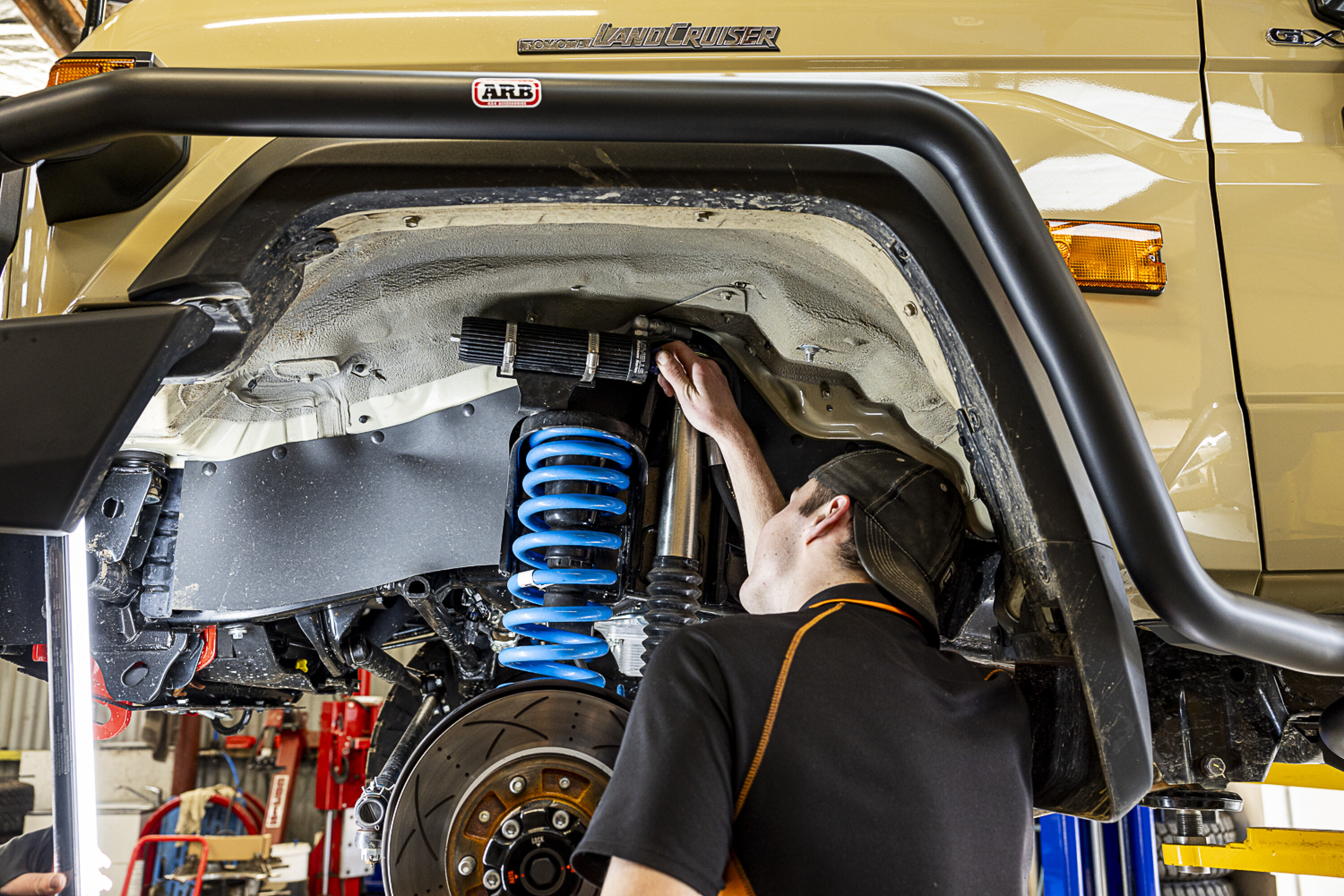
“We still often put air bags in vehicles that have had GVM upgrades, too,” she says. “You add the tray canopy, the water tank and then the van and she’s maxed-out. That’s where the bags come in.”
According to Bo, helper springs are different again and are aimed at vehicles that constantly cart extra weight.
“We rarely use helper springs for a GVM upgrade, and for a stock vehicle they’re not as popular as air bags. But they’re great for when you’re constantly carrying extra weight. It’s application based; air bags are probably a bit nicer in the ride department, but if you’re looking for something you don’t have to touch, then a helper spring is a good option.”
Linda Hitch also reckons air bags have their place as they offer a tow rig more control over ride height and loading options.
“If they’ve been installed correctly, a lot of people swear by them, but others don’t like them at all. If it hasn’t been done properly, an air-bag instal can really affect stability.”
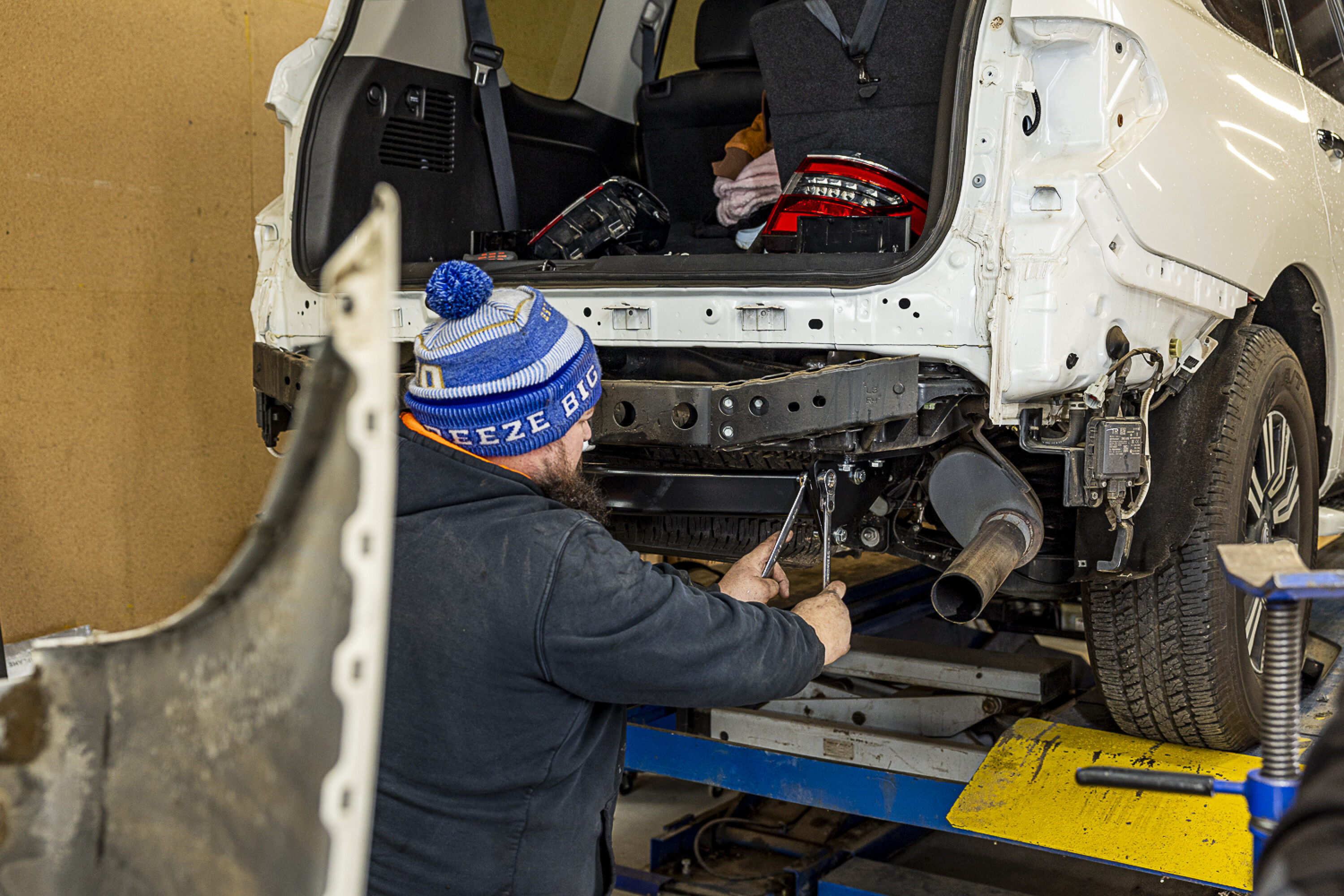
The basics of safe towing
The other elements of a safe, legal tow rig that is actually enjoyable to use come down to the basics.
For starters, you’ve got to ask if you have got enough engine for what you’re towing. We’ve seen lots of dual-cab utes that are rated to tow 3500kg, but put anything like that mass on the towbar and, suddenly, they struggle with hills and headwinds. At that point, you can kiss goodbye to fuel efficiency and driving enjoyment… and you’ll be sitting behind a lot of roadtrains.
A car’s cooling system also gets a workout when towing, and regular radiator replacement is probably a better bet than having one go pop miles from anywhere. So, when was your radiator last replaced? And the coolant (it has a use-by date as well)? Are the hoses in good nick and the fan belts fresh?
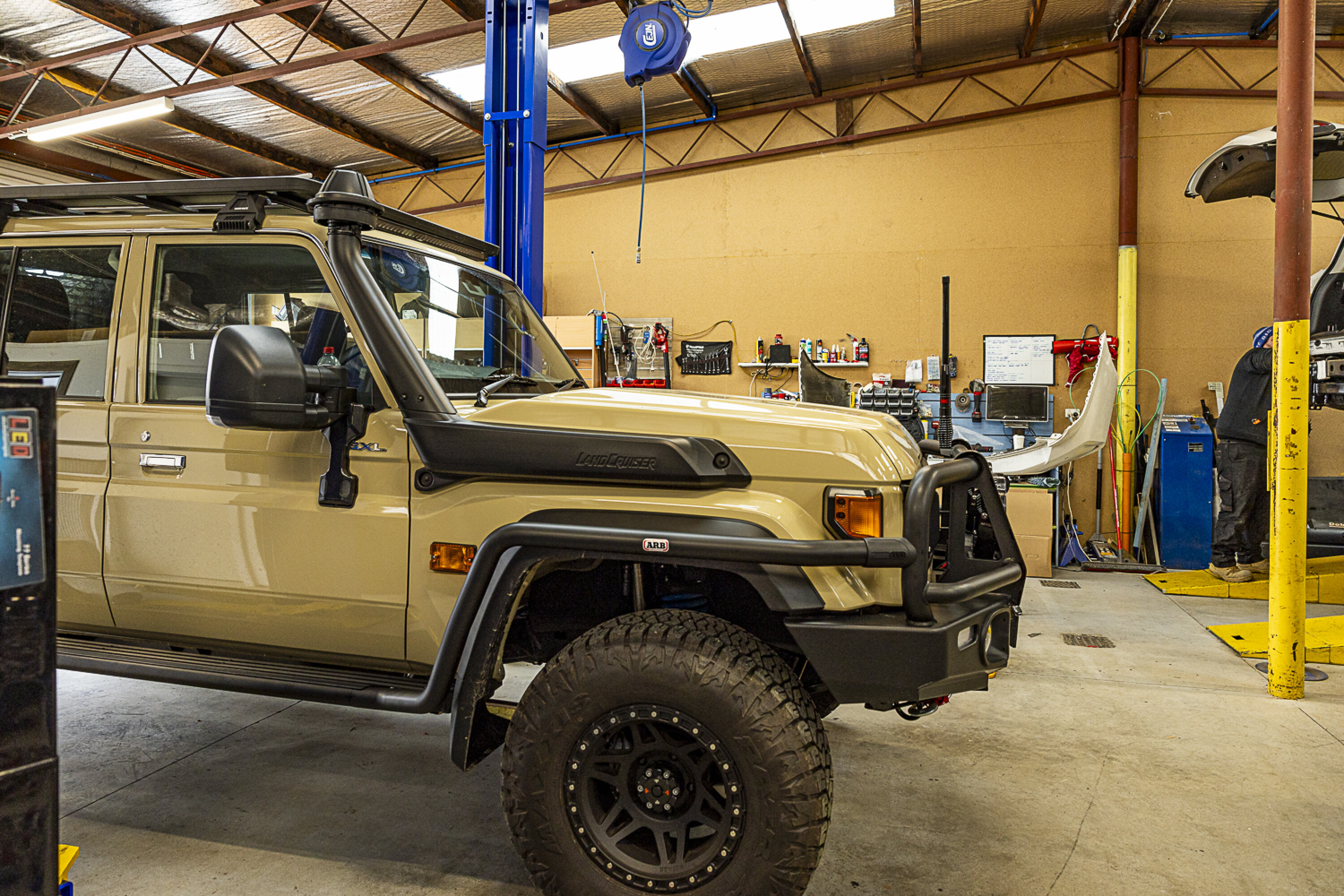
Is your vehicle generally fit and healthy? Following on from Linda Hitch’s statement that a lot of people are cash-strapped and recycling their tow rigs, does your vehicle have enough life left in it to be reliable for the long haul?
Does it need new fuel-injectors? Is it time to rebuild that mechanical fuel pump? How’s the DPF situation? Are the dampers leaking? How much life is left in the tyres? Do the spare tyres actually have air in them? These are all regular maintenance considerations that can cause an inconvenience 48 weeks of the year, or totally ruin your holiday thousands of kays from home when you’re on tour.
Bo Jackson also points out that if you plan to run your van off the tow vehicle’s battery, you’ll need some extra wiring taken care of.
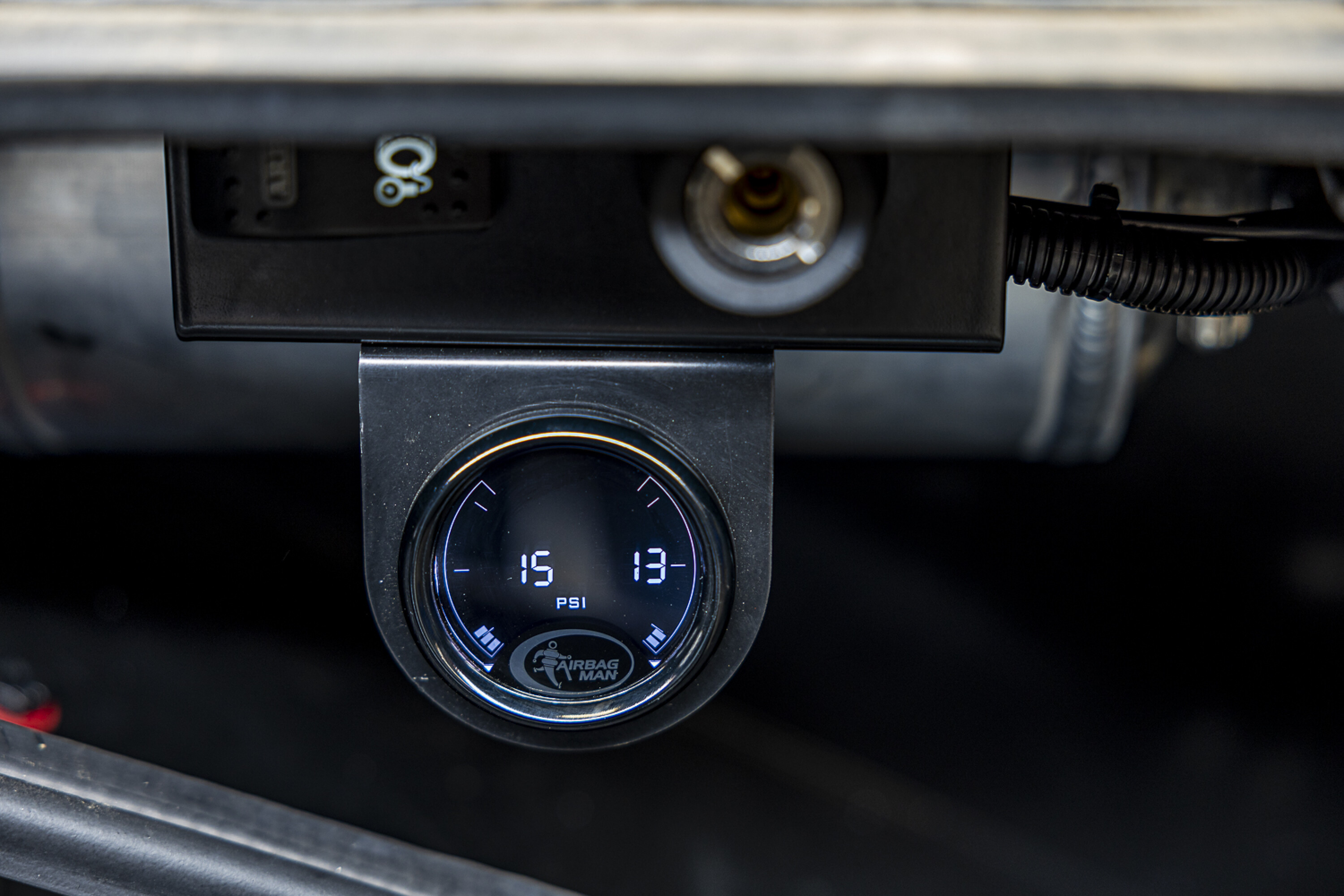
Yes, while the standard towing plug will run the trailer’s lights and electric brakes, you’ll need an accessory loom wired in to operate the van’s fridge on the run.
And do you know for certain that your brake controller is working properly? A dry run before you head off will let you know whether the controller is doing its thing and allowing you to adjust it to suit the load and conditions. But this is not something you want to be experimenting with on day one of the Big Lap.
And don’t forget about mirrors. Some vehicles have better standard mirrors than others, but all of them can do with a proper towing mirror when there’s a big van hitched up. The right mirrors take a lot of the guesswork out of carparks and traffic, and a lot of stress out of any other situation.
The various state caravanning associations often publish handy checklists you can use to make sure you haven’t missed anything.
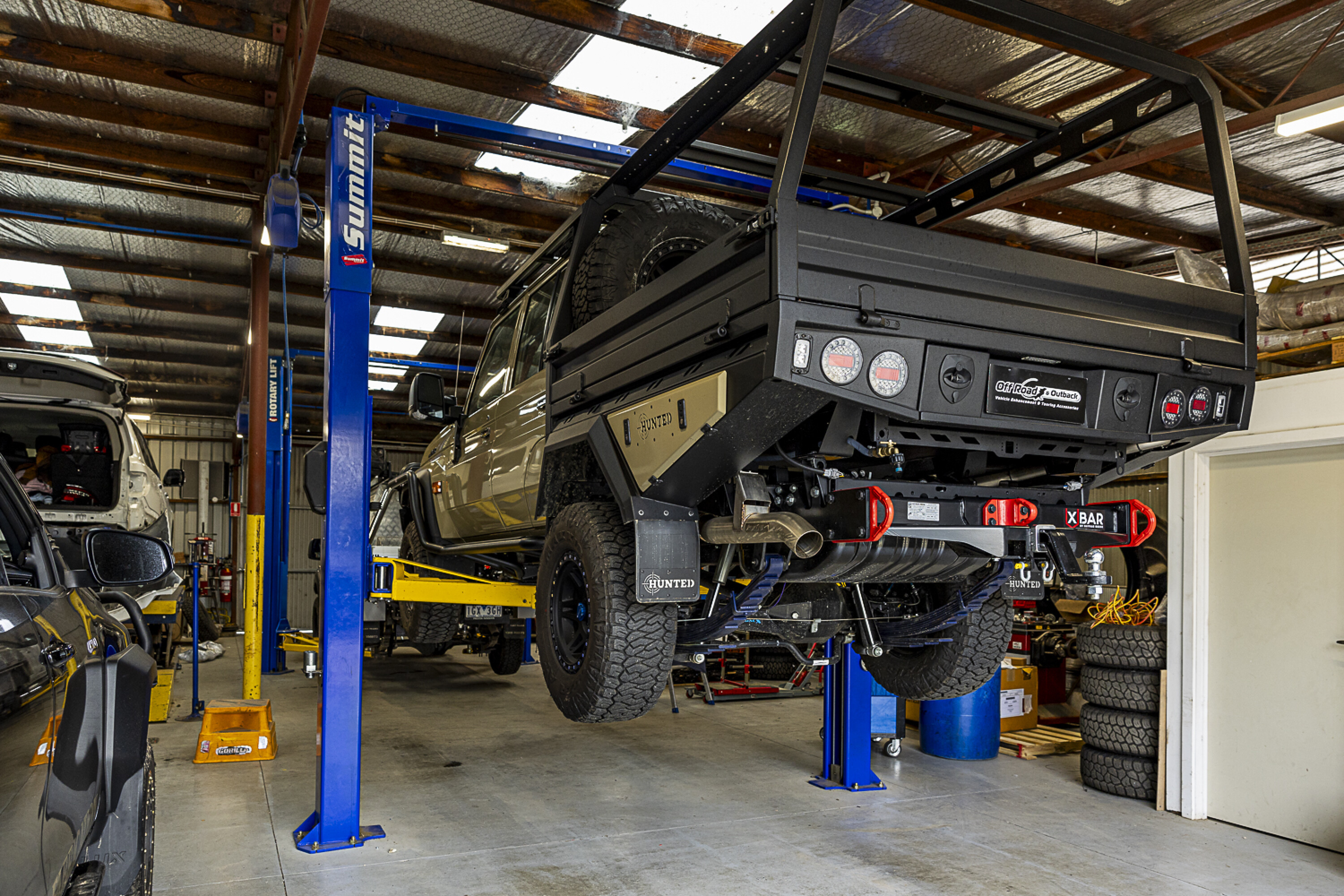
Weighing it all up
The bottom line is that the authorities are getting really good at spotting overloaded or unsafe rigs and there’s pressure from government and lobby groups to do something about it.
Long gone are the days when you could afford to be a little bit overweight or have some other technical glitch, and run the gauntlet with little chance of being detected. That was then, this is now. Oh, and don’t forget to keep the weighbridge certificate in the glovebox.
Top 5 towing tips
- Never exceed vehicle GVM or GCM
- Run your setup over a profession weighbridge
- If needed, only fit a reputable GVM upgrade
- Air bags can be good for levelling a towing rig
- Ensure your vehicle is in good nick before the Big Lap

